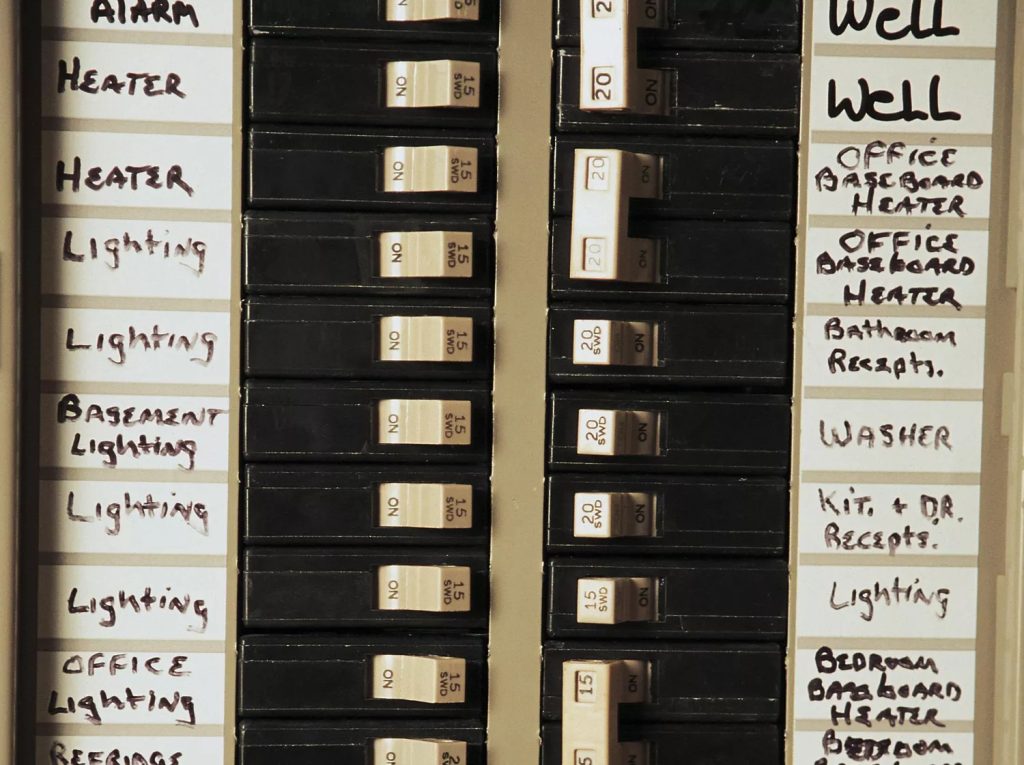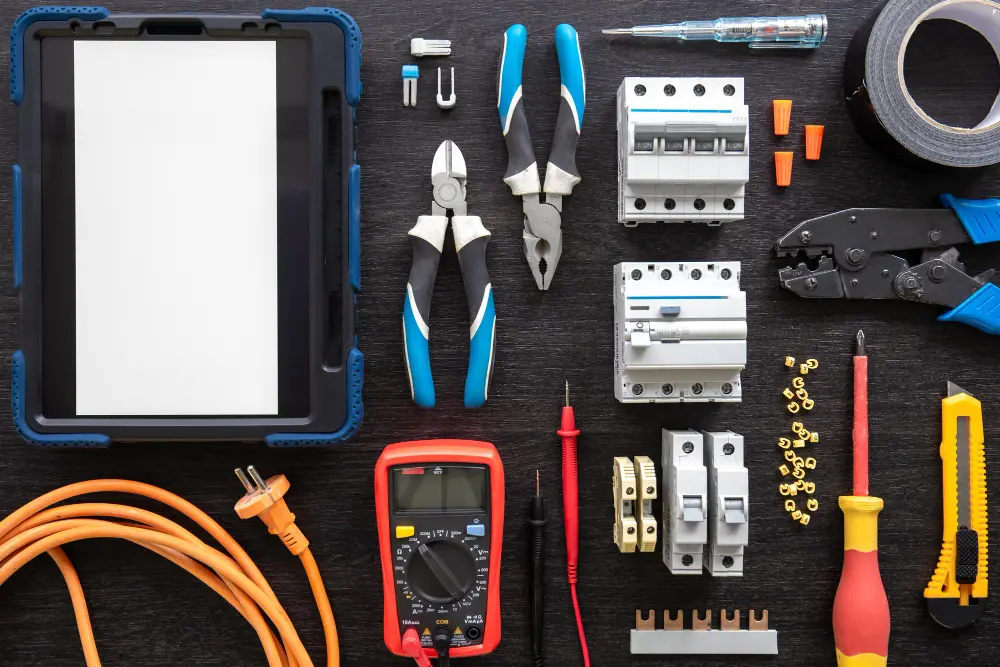What Is a Circuit Breaker Panel?
Table of Contents
ToggleA circuit breaker panel is present in every household. It is the central power system, also known as a breaker box, electrical panel, etc.
This panel plays a major role in the distribution of power in your home. It splits the incoming power into smaller circuits to distribute electricity in different parts of your house.
It also protects the circuits from problems like overload and power surge. If there is power overload, the breaker will break the flow to prevent damage.
If you want to know more about a circuit breaker panel, we can help you. In this article, we are going to discuss in detail about circuit breaker panel, how it works, and show you where it finds it in your house.
What Is A Circuit Breaker Panel?
A circuit breaker panel controls the electricity to various parts of your home. It prevents electrical appliances from overusing the power supply and overheating.
It also protects you from the inconvenience of rewiring your home if an appliance fails. A circuit breaker panel is the central point of electrical distribution in your home. The power from the service conduit is directed through the board and distributed to each room.
Each room in the house has an outlet that connects to the central board. The circuit breaker is a safety device, and a panel housing contains several outlets. A safety reset button plugs into these outlets, which prevents any malfunctions in the plugged appliances.

How Does A Circuit Breaker Panel Work?
A breaker panel works to prevent damage to electronic appliances by cutting off the power supply. It has a bunch of smaller switches that all work together to create a current of electrons that energizes our modern lights, appliances, and lives.
A circuit breaker panel is a series of circuit breakers that feed your entire house. Each breaker serves a specific area, such as a kitchen or bathroom. These breakers are controlled by a lever that moves the breaker into the “On” or “Off” positions.
There is a main circuit breaker, which controls the power to the circuit breakers below it. It should also have a neutral bus and a grounding bar to prevent any dangerous electrical shocks. A breaker panel is enclosed, with a panel access door.
A circuit breaker is a safety device that is used to protect wires in your home. The electricity that is running through overloaded wires can burn out electronic items and appliances, which can cause fires.
A circuit breaker will trip to cut off power to the entire house or a particular zone to prevent a fire. The number of circuits in your house or the electrical load in each room will determine how fast your breaker will trip.
Where Will You Find The Circuit Breaker Panel?
Generally, the main breaker panel is located inside the walls of your house. It is a metal cabinet-like device with several switches. They are arranged in a row, with each branch circuit breaker branching off to a specific area of your house.
At the top of the panel is the main ‘breaker switch,’ which controls the flow of electrical current from the main ‘breaker’ down to the branch breakers.
Most new homes have a main breaker box located outside. It can also be found inside your house. Depending on the design of your home, you can find the breaker box in various places. Most often, it is located beneath the service head, the point where your power line connects to the utility grid.
Upon arrival, look for a gray metal box. This is where the main circuit breaker is located. It may be in a hallway, laundry room, and garage or even next to the meter box. Older homes might have a fuse box, a similar device, with rows of switches.
What’s Inside the Circuit Breaker Panel?
Usually, this panel contains the main breaker as well as other smaller circuits with fuses. These fuses are connected to the main service panel. Listed below are the different things present inside a circuit breaker panel.
- Main Breaker:
The main breaker is the main circuit breaker. It controls the power of your entire house. You can switch it manually to turn the power off or on to turn certain outlets and appliances. If you accidentally flip it off, the lever will automatically move to the “in-between” position. When you switch it back on, the power will be restored.
The main breaker is the one that controls the entire electricity flow in the home. It has a single-pole breaker that serves only one circuit, while the double-pole breaker serves both high and low-voltage devices. In the case of single-pole overload, the faulty wire will only affect one slack in the other two. The main circuit breaker is responsible for shutting off the power in branch circuits.
- Branch Circuit Breakers:
These are smaller circuit breakers inside the panel. Each one represents a different room. It works just like the main circuit breaker. However, instead of cutting off complete power, it will only cut off the power for the particular room.
Branches are formed by two rows of smaller circuit breakers. The 120-volt ones tap into one hot bus bar in the panel, while the 240-volt ones connect to two 120-volt bus bars. The breaker is installed in a room to protect lighting and standard outlets.
The breaker is also used to protect major appliances. The breaker must be reset to avoid this problem. A branch circuit breaker is a great safety device for any home or building.
- Hot Bus Bars:
They are electrical cables connected together, and the resistance between them is the source of their heating. These cables can carry abnormally large amounts of current. These devices are usually hidden in plastic ducts or metal bus covers, making them difficult to see.
A bus bar is a conductive strip that is applied to the surface of a conductively coated glass. The bus bar is typically made from copper or aluminum and mounted on plastic insulators. The bus bar has tabs on both ends that connect to branch circuit breakers.
Tel: +86-577-88671000
E-mail: ceo@tosun.com
Skype: tosunelectric
Wechat: +86-139 6881 9286
WhatsApp: +86-139 0587 7291
Address: Room No.1001 Wenzhou Fortune Center,Station Road, Wenzhou, China
REQUEST A QUOTE
WhatsApp us
 : +86-139 0587 7291
: +86-139 0587 7291 English
English Español
Español Русский
Русский Français
Français العربية
العربية Português do Brasil
Português do Brasil Українська
Українська Türkçe
Türkçe Polski
Polski Nederlands
Nederlands Italiano
Italiano Bahasa Indonesia
Bahasa Indonesia हिन्दी
हिन्दी اردو
اردو አማርኛ
አማርኛ Հայերեն
Հայերեն ไทย
ไทย Монгол
Монгол فارسی
فارسی Shqip
Shqip Ελληνικά
Ελληνικά


